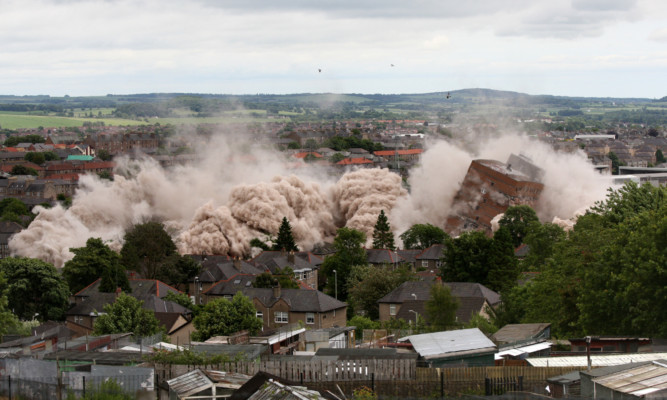Building 120 new homes in the heart of the Hilltown in Dundee will revitalise the community, the city council has said.
It is spending £15 million on housing to replace the Derby Street high-rise tower blocks, which disappeared in a cloud of dust in 2013.
While the project has been welcomed by councillors from all parties, it has been the cause of some tension between the SNP and Labour groups.
Senior SNP councillor Jimmy Black has said the work was righting the wrongs of a “slash and burn housing policy” that saw past Labour administrations demolish homes and drive people from the Hilltown without any future plan.
He claimed those actions had torn the spirit from the community but expressed the hope that the creation of high quality new homes and facilities would help to turn things round.
Work should start this year on important elements of the Hilltown regeneration project, beginning with the creation of 77 social rented homes in conjunction with Hillcrest Housing Association.
In time, the number of homes could be increased to 120, while plans are already well advanced for the remaining part of the Alexander Street site to be redeveloped for new school, community and NHS buildings.
Mr Black said: “This council’s former Labour administration ordered the mass demolition of hundreds of houses in the Hilltown. It forced people to leave the area, many never to return.
“It was a scorched earth policy that blighted large parts of the Hilltown, demolishing homes when they did not need to go.
“We have put a stop to that policy and many houses that might have been removed are now warm and energy efficient homes.
“The Hilltown remains, however, an example of how not to do things and other councils have learned that you do not simply destroy a community and destroy hundreds of homes without a plan. These were actions that the people of the Hilltown did not deserve.”
Mr Black’s comments were sparked by a statement made by Labour councillor Brian Gordon, who welcomed the redevelopment of Derby Street.
He said: “I remember when the multis were built. They were a welcome addition to the city.
“Thirty years later, they were sadly tired and not attracting too many people to live in them.
“It was sad to see these homes disappear in a cloud of dust but now we are offering housing that will be recognised for its quality and welcomed by Dundonians.
“There will be people who once lived in the Hilltown and who grew up there who will want to go back.”
Housing convener John Alexander said simply that the Derby Street development would be “a fantastic addition” to the Hilltown community.
“It will bring much-needed, energy efficient housing to the city and will bring additional footfall to shops,” he added.
